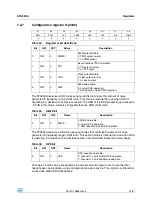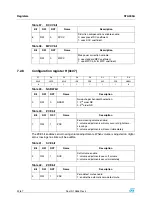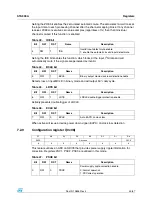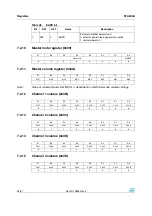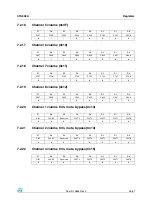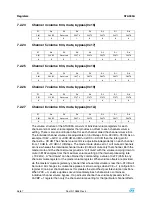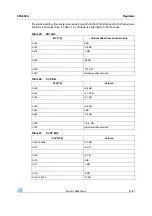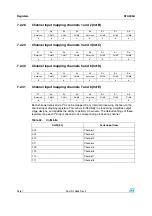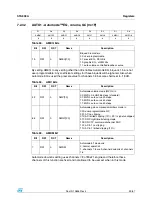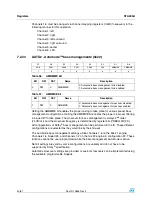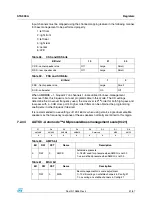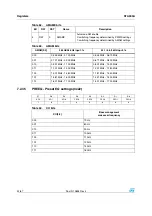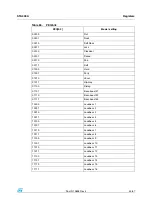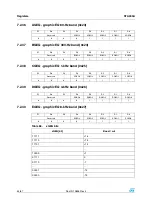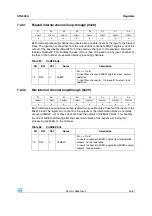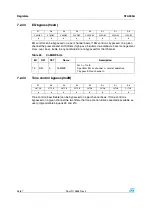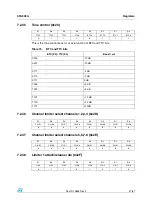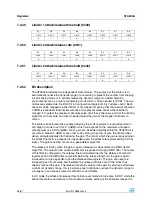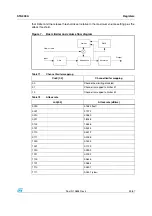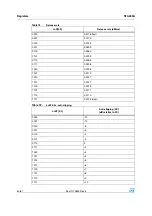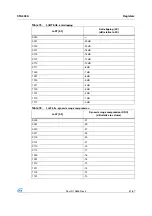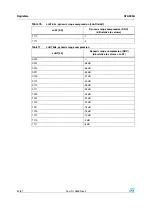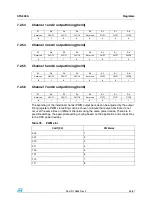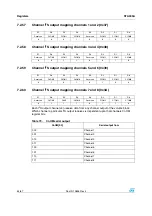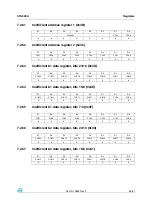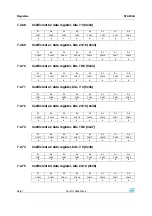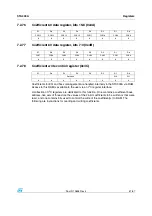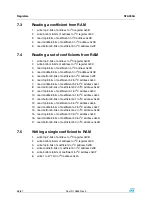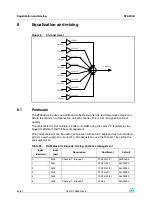
STA309A
Registers
Doc ID 13855 Rev 4
45/67
7.2.41 Biquad
internal
channel loop-through (0x28)
Each internal processing channel can receive two possible inputs at the input to the biquad
block. The input can come either from the output of that channel’s MIX#1 engine or from the
output of the bass/treble (Biquad#10) of the previous channel. In this scenario, channel 1
receives channel 8. This enables the use of more than 10 biquads on any given channel at
the loss of the number of separate internal processing channels.
7.2.42 Mix
internal
channel loop-through (0x29)
Each internal processing channel can receive two possible sets of inputs at the inputs to the
Mix#1 block. The inputs can come from the outputs of the interpolation block as normally
occurs (CnMXLP = 0) or they can come from the outputs of the Mix#2 block. This enables
the use of additional filtering after the second mix block at the expense of losing this
processing capability on the channel.
D7
D6
D5
D4
D3
D2
D1
D0
C8BLP
C7BLP
C6BLP
C5BLP
C4BLP
C3BLP
C2BLP
C1BLP
0
0
0
0
0
0
0
0
Table 67.
CnBLP bits
Bit
RW
RST
Name
Description
7:0
RW
0
CnBLP
For n = 1 to 8:
0: input from channel n MIX#1 engine output - normal
operation
1: input from channel (n - 1) biquad #10 output - loop
operation.
D7
D6
D5
D4
D3
D2
D1
D0
C8MXLP
C7MXLP
C6MXLP
C5MXLP
C4MXLP
C3MXLP
C2MXLP
C1MXLP
0
0
0
0
0
0
0
0
Table 68.
CnMXLP bits
Bit
RW
RST
Name
Description
7:0
RW
0
CnMXLP
For n = 1 to 8:
0: inputs to channel n MIX#1 engine from interpolation
outputs - normal operation
1: inputs to channel n MIX#1 engine from MIX#2 engine
outputs - loop operation.

